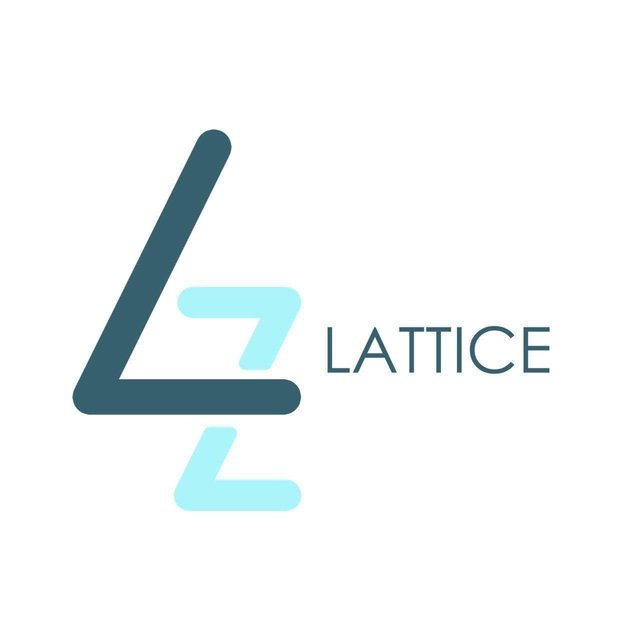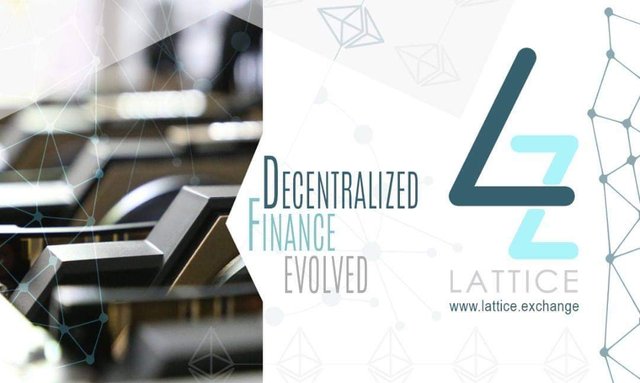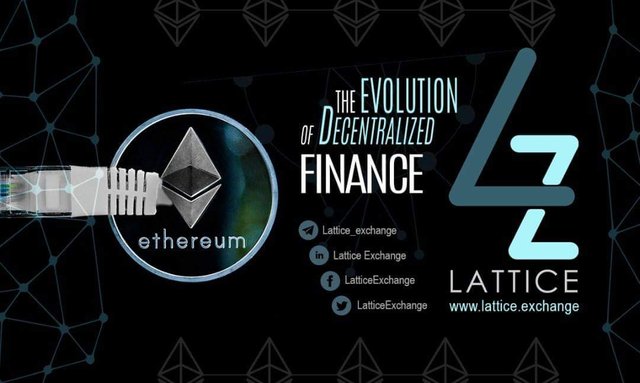WHAT TO KNOW ABOUT LATTICE EXCHANGE (A REVIEW)

A project, created to solve a problem will always retain its competitive advantage for a long time, and with constant Improvements, the margin will continue increasing thus keeping other projects at bay. This fact is seen both in the crypto space and in the outside world.
Now in the crypto space today, there have been many projects, wherein others failed to achieve their aims and objectives, others sprung up and overtook them, and it has been like that ever since.
A project like Lattice Exchange tends to take a different pathway and this is seen in its quest to make the DeFi space an efficient and attractive one.
But the question is, are there issues making the DeFi space less efficient? The answer is Yes.
A study has shown that the main issues limiting DeFi applications are in base layer protocols, because existing blockchain infrastructures (mainly Ethereum blockchain network) have scalability limitations, in addition to that, it is also costly and slow in terms of transactions. Further studies show that it is not architecturally designed to process data like those seen in centralized data processing systems, which of course exists in traditional financial markets as well as in the trading of securities.

Then, in a bid to solve the issues whilst making the DeFi ecosystem efficient, lead the team behind Lattice to leverage the Constellation protocol.
A study carried out shows that, the Constellation Hypergraph Transport Protocol (HGTP) is the only secure communications protocol that can properly connect real-world applications through seamless tokenization of data. The Constellation also enables an ecosystem of applications to be built on the Hypergraph Network while using the HGTP to securely capture, connect and transport that same data for the evolution of applications, not only that, data assurance and compliance is also achieved.
Having known this brief about the Lattice exchange, it is worth it knowing why it is different and the underlying potentials within it.

WHAT TO KNOW ABOUT LATTICE EXCHANGE
The first thing to know about Lattice is that it is a decentralized finance (DeFi) application built with Ethereum and Constellation’s Hypergraph Transfer Protocol (HGTP); although in the third phase of development, full implementation on Constellation protocol will be achieved. However, the vision of Lattice is to advance and improve the world’s financial trading solutions for crypto assets while empowering users and liquidity providers with advanced AMM algorithms.
Secondly, Lattice aims to chart the course that will pave way for the growth of existing DeFi solutions by providing more assurance in crypto asset trading and settlements. It will also offer users the ability to incorporate multiple specialized and asset-specific automated market-making algorithms. The outstanding thing about this solution is, it will continue improving the blockchain space with advanced financial instruments known to have the needed speed, cost-effectiveness, security, and scalability capable of beating that of traditional security asset traders.
As earlier stated, Lattice exchange aims to solve the issues in current DeFi applications. Thus, through leveraging the Constellation HGTP, Lattice provides adequate liquidity, institutional-grade AMM algorithms, faster and less expensive settlement. Lattice will also bring about institutional-grade reliability and usability to the DeFi ecosystem.
Another good attribute of Lattice is that it is a platform with AMM based liquidity pool that allows lenders to earn transaction fees on their deposits. Also, with smart routing algorithm, trade execution can take place across different platforms efficiently. Lattice also have a governance token known as Lattice (LTX). This token gives holders certain rights in regards to factors like transaction fees and inflation/deflation.
Lattice exchange will have different phases of development. In the first phase, Lattice will first be developed on the Ethereum blockchain for the sole purpose of transaction settlement. While in the third phase, migration to Constellation protocol will be done. Thus, liquidity within the DeFi ecosystem will be aggregated and order matching improved as well. Lattice will go further to aggregate the liquidity from various Decentralized exchanges so as to create better pricing and less slippage for traders. Lastly, users will be encouraged to supply liquidity to the exchange pools on the platform while earning trading fees.
As previously discussed that one of the main issues in current DeFi ecosystem is found in their base layer protocol, Lattice, in this case, will leverage the Constellation’s HGTP as the base layer protocol, therefore supporting more complex trading algorithms and delivering faster trades. The feat is achieved because, the Constellation ecosystem supports microservices and complex data structures, hence being suitable for high computation when it comes to real-time trading. Also, by banking on the Constellation protocol, Lattice will make it possible for users to choose and also build their own AMM, therefore creating liquidity pools based on asset type.
When it comes to crypto trading, most times we hear a trader saying, "I prefer trading on exchange A than exchange B" or most times, traders will say " exchange A is better because it has enough trading volume or liquidity". This is just the simple fact about exchanges, thus showing that lack of liquidity mars an exchange while good liquidity makes an exchange attractive. Now when it comes to DeFi, a study has shown that liquidity is spread over different uniswap type environments and as such are unfavourable for traders.
Therefore to enable higher liquidity and better prices, Lattice exchange pools liquidity from several types of uniswap exchanges, thus allowing for less slippage and higher trading amounts.
In the same way, as it is different from the current AMM liquidity pools, Lattice will also support multiple AMM algorithms in the later phase of platform Improvements for users, especially when they create a new trading pair on the exchange.Yet again, as for issues regarding high costs or transaction fees, slow transactions, and segregated liquidity of current decentralized liquidity solutions, Lattice offers a solution. This solution comes in the form of a new liquidity pool designed to utilize the Hypergraph of the Constellation ecosystem.
Much has been said about this Hypergraph, but what actually is it? It is a decentralized directed acyclic graph built with concurrent consensus and a micro-service framework.
Therefore, this solution from Lattice will be feeless or very little fee in some cases.In one of the phases of the development of the Lattice exchange, it will involve the migration from Ethereum, to the Constellation Hypergraph. That is to say, Lattice AMM will run on the Constellation through micro-services thereby achieving high-throughput institutional-grade trading experience. Additionally, when migration is done, there will be multiple pluggable specialized AMM algorithms suitable for specific trading pairs hence allowing users to choose and develop their own AMM. There will also be the introduction of customizable data types on the Hypergraph thus securing trade settlement and audit trail generation for assurance purposes.
Owing to the fact that the protocol on which Lattice is based on was developed by the Constellation team; through this, having governance token becomes a possibility. Therefore with this feat, Lattice becomes a fully decentralized platform, governed by the token holders of the protocol which of course is for the benefit of the platform users.
Also, owing to the fact that Lattice products and services are different from traditional order book-based DEXes, hence in Lattice, instead of market makers, the liquidity provider, in this case, will contribute to the platform through depositing in the pool thereby earning transaction fees in the respective pool.
Lastly, in Lattice exchange, for each transaction that takes place, the transaction fee is already set to be 0.03%, however changes can occur based on the decisions of the governance committee. Nevertheless, most of the transaction fee will be rewarded to liquidity providers in the respective pools while the remaining will be swapped to LTX tokens. These swapped LTX tokens are then burned to reduce the circulating supply of the tokens.

CONCLUSION
The fuel that power the Lattice exchange is the platform's tokens with ticker LTX. It acts as a governance token as well as being used to reward various trading activities on the protocol. Also, it will start as an ERC 20 token, but later on, will migrate to Constellation protocol.
Lattice is a DeFi project powered by Constellation’s Hypergraph Network and HGTP, thus providing the platform with the needed infrastructure to improve and scale the DeFi space which further makes crypto asset trading tools to be seen with integrity and assurance.
Furthermore, the goal of Lattice is to provide solutions with more security, speed, and lower transaction fees which will be different from current DeFi ecosystem thus attracting more crypto asset traders.

JOIN/FOLLOW LATTICE ON THE FOLLOWING OFFICIAL CHANNELS
Twitter: https://twitter.com/LatticeExchange
LinkedIn: https://www.linkedin.com/company/lattice-exchange/
Facebook: https://www.facebook.com/LatticeExchange
Whitepaper: https://lattice.exchange/Lattice-Exchange-Official-Whitepaper.pdf
Telegram: https://t.me/Lattice_exchange
Instagram: https://instagram.com/latticeexchange
Bitcointalk ANN: https://bitcointalk.org/index.php?topic=5278016.0
Website: https://lattice.exchange/
Bounty0x Username: chuks
Note: "A sponsored article written for a bounty reward."